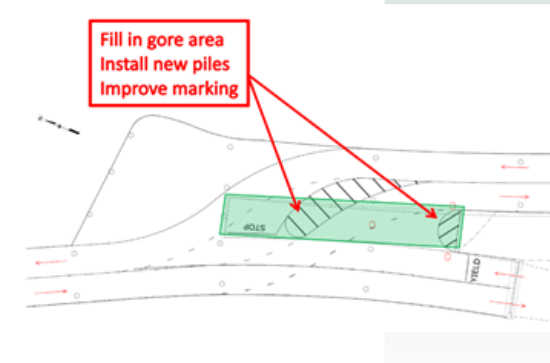The National Park Service recommends widening, modernizing the Mount Vernon Trail

Photo by Kyle Gradinger on Twitter used with permission.
Mount Vernon Trail users could find themselves on a wider, safer and straighter trail in the near future if the National Park Service gets the changes it wants. In a recently completed study of the Mount Vernon Trail, the Park Service has recommended trail upgrades, along with changes to operations and maintenance, that will improve the safety and user experience of the trail.
The Mount Vernon Trail is both a popular recreation facility and a critical transportation resource that hosts over a million users a year. But it’s also a 1930’s bridle path that was modified into a shared-use path in the 1970’s and 80’s before there were standards and, despite several spot improvements over the years, it’s still outdated. It’s also starting to show its age with cracked pavement and fading paint.
During commuting hours and on good weather weekends the trail is crowded, resulting in frequent user conflicts and even crashes. Furthermore, use is expected to increase as more people take up active transportation, when the Amazon Headquarters is built and as the trail gains utility from a new Long Bridge, a built out trail network and new connections near the Humpback Bridge.
The Arlington section of the trail, which they call Zone 3, is the most crowded especially between the 14th Street Bridge and Four Mile Run, with high user conflict at the Crystal City Connector and near Roosevelt Island.
The study recommended a wide array of improvements, both general and specific to repair and modernize the trail and bring it up to current standards.
Of the trail’s 38 bridges, most need some small repair but six need to be replaced. Four of those replacements are already programmed, most notably the long boardwalk underneath the Roosevelt Bridge, the so-called Trollheim Bridge.
That bridge will be replaced, widened and straightened, and the intersection with the Roosevelt Bridge ramp improved; but it won’t happen soon as NPS has targeted that work to begin in 2026. Bridge 12, located just south of Waynewood Blvd, is to be replaced next year, and the trail in the area significantly straightened out.
Plan to realign the Bridge 12 along the Mt. Vernon Trail in Fairfax County by NPS.
Furthermore, there are nine bridges that have chain railings that don’t meet modern standards. The study recommends replacing those with metal banister railings that are compliant with the American Association of State Highway Transportation Officials (AASHTO), a non profit association that represents transportation and highway organizations, standards. All the bridges should also be made four feet wider than the trail that approaches them.
Location and status of trail bridges Bridge condition map by NPS.
The study identifies problems with signage and wayfinding, trail width and at-grade crossings. Signs are inconsistent, weathered, outdated and at times under-sized. Some are missing and at other times they’re excessive. The trail is also too narrow.
The study noted that best practice would call for the trail to be 11-14 feet wide based on current usage, but only the Jones Point section is 11 feet wide. The rest is mostly 8-9 feet wide, with a few areas 6-7 feet wide. Trail crossings lack adequate signage for motorists, a safe geometric design, visible crosswalks, adequate sightlines, increased trail width at intersections and detectable warnings for visually impaired users. The study calls for addressing all of these issues.
Proposed changes to the Trollheim Bridge intersection by NPS.
The specific improvements are broken up by time. In the short term it calls for reconstruction of Bridge 12 and 23/24 and maintenance of others; signage and pavement marking improvements, hiring a trail manager; trailhead enhancements, and new trail counters.
In the medium term it recommends reconstructing and widening most of the Arlington section by 3-6 feet and the Trollheim Bridge by 2 feet to 14 feet; replacing key trail intersections — like the 14th Street Bridge — with trail roundabouts; separating cyclists from pedestrians in areas where that’s possible - such as Gravelly Point; replacing Bridge 28; fixing the Daingerfield “S” curve; and rehabilitating the southernmost section of the trail.
In the long term the remainder of the trail in Alexandria and Fairfax Counties should be rehabilitated.
Arlington and Alexandria have already signaled an interest in working on these improvements. They’ve applied for a grant to pay for the trail widening. NPS has identified partners for other improvements as well.
The Mount Vernon Trail is one of the most popular trails in the area, beloved by bike commuters and recreational trail users alike, but it is ready for an upgrade. This recently completed NPS study identifies the issues with the trail and how to solve it. Trail users will still need to wait for the improvements many have been calling for for decades, but this is a major milestone on that path.
